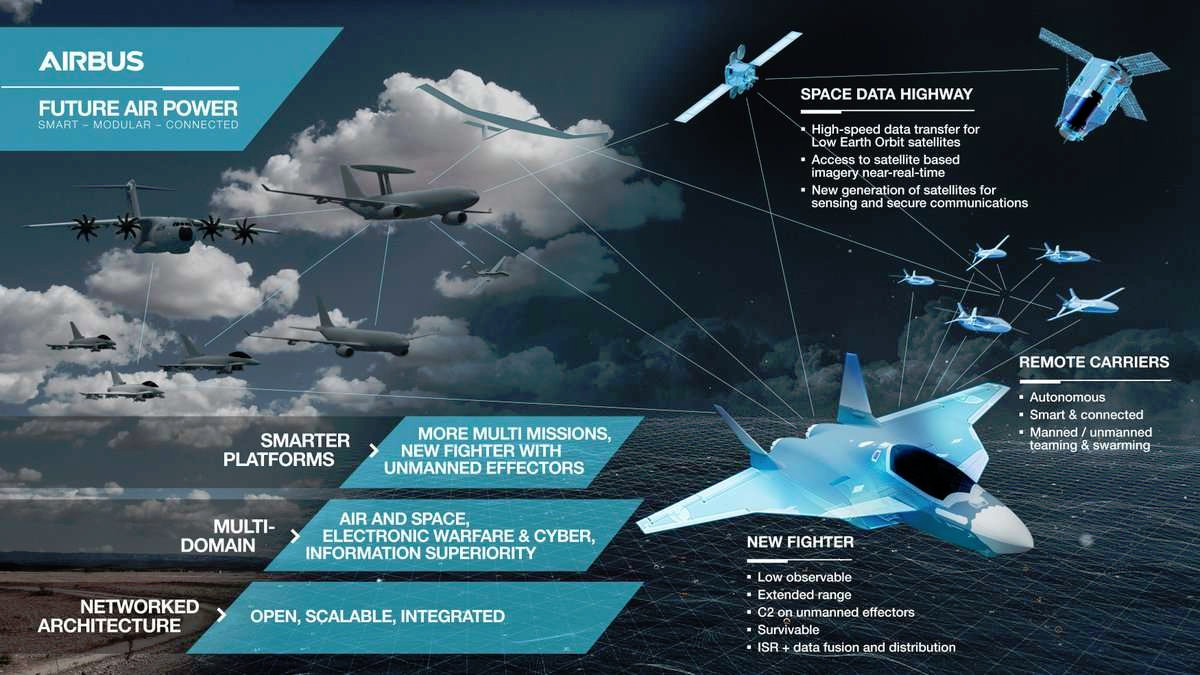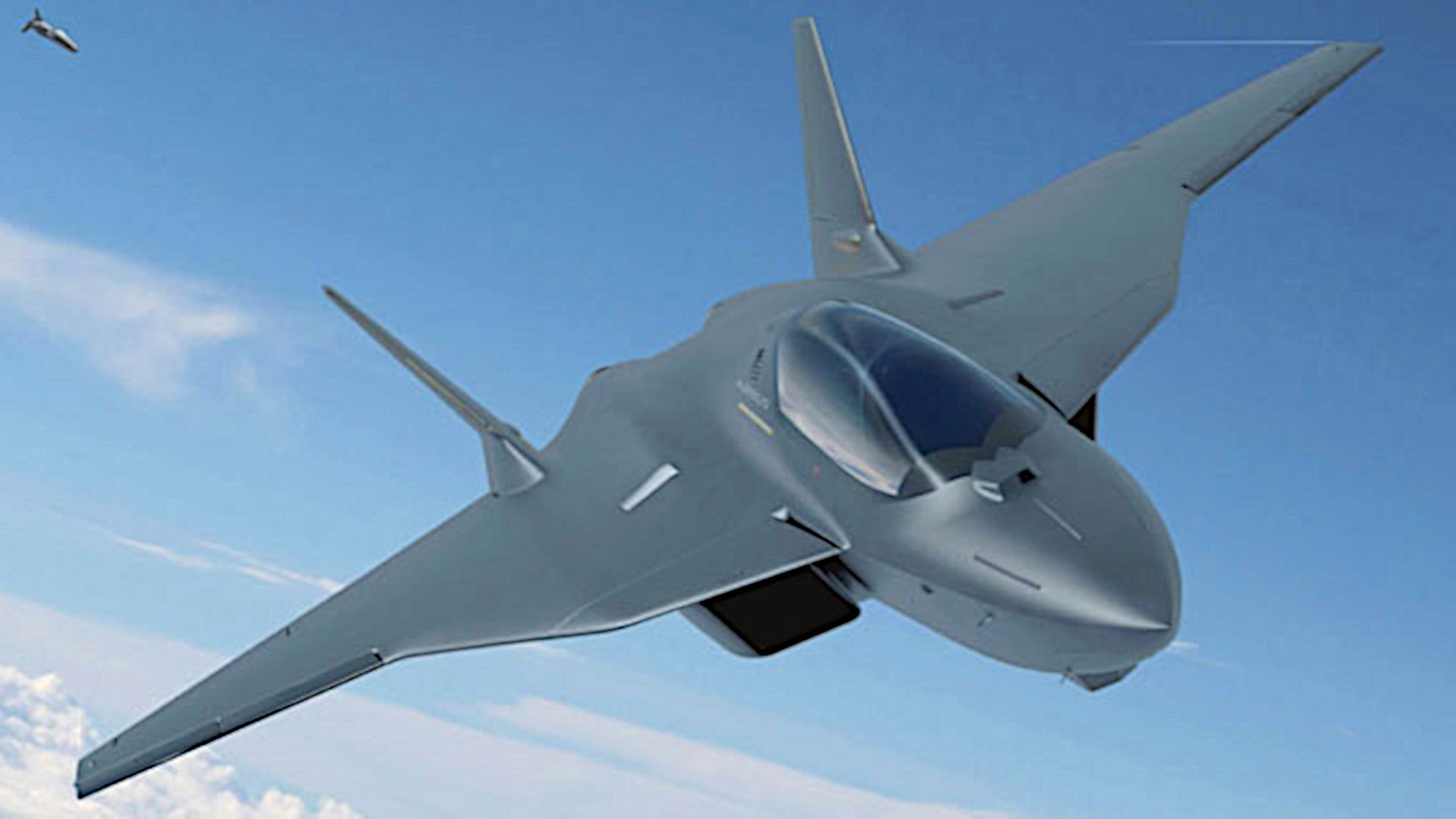Spain has formally announced its interest in joining the Franco-German stealth fighter project, commonly referred to as the Next Generation Weapon System, or NGWS. At the same time, the Spanish Ministry of Defense claims that Italy and The Netherlands have signed on to be part of the United Kingdom’s Tempest sixth-generation fighter jet program, which it also predicts will merge with France and Germany’s effort to create a true European fighter jet project.
Spain’s Ministry of Defense unveiled its plans in a press release on Dec. 3, 2018. France and Germany have been publicly working together to craft the requirements for an over-arching Future Air Combat System (FCAS) since July 2017. This would include a manned component, known as the Next Generation Fighter (NGF), networked together with unmanned “loyal wingmen,” which now carry the NGWS moniker specifically. FCAS could also include other types of drones, including a stealthy unmanned combat air vehicle (UCAV), in the future.
Spanish Defense Minister Margarita Robles “requests that the Spanish incorporation be formalized, through the signing of a Letter of Intentions (LOI, in its English acronym) or a tripartite Memorandum of Understanding (MOU),” a basic machine translation of the Spanish language-only press release explains. “The cost of being a member of the program is estimated at around 25 million euros [approximately $28.4 million at the time of writing] for the next two years.”
France’s Dassault and European aviation consortium Airbus are presently working on the various components of the FCAS, including the NGF and NGWS. French engine maker Safran has reportedly entered into an agreement with German firm MTU to build the jet engines for the fighter jet component, according to Reuters. You can read more about the overall FCAS program here and here.

The Spanish announcement does not make any specific mention of desired industrial cooperation, though Spain appears interested in becoming a full partner in the program. Spain is already a major partner in Airbus’ EuroMALE medium-altitude long-endurance drone program.
It’s hardly surprising that Spain would be eager to join the program. The Spanish Ministry of Defense’s press release notes that the country has 20 EF-18A/B Hornet fighter jets that will need replacing before 2025 and expects to retire the remaining 65 examples by 2030. The Spanish Air Force received the first of these planes in the late 1980s.
In addition, in 2016, the Spanish and German governments had already worked together with Airbus to develop the initial requirements for the FCAS concept. In June 2017, shortly before the announcement of the Franco-German effort, it was Germany and Spain who were calling on France to join their effort.

It is also worth noting that France, Germany, and Spain had initially collaborated, together with Italy and the United Kingdom, on the Eurofighter EF-2000 Typhoon fourth generation fighter jet. The French subsequently dropped out of that program and purchased the indigenously designed and built Dassault Rafale.
We at The War Zone had already pointed out in the past that France and Germany would likely be very welcoming of Spanish interest in the project, as well as requests to join from smaller countries, especially those in Europe and elsewhere that had not already selected the F-35 Joint Strike Fighter. Additional partners would help spread out the cost burden of both developing and producing the aircraft, as well as operating and sustaining them. Development, production, and sustainment costs have continually proven to be extremely high for advanced stealthy aircraft programs.
Airbus, in particular, has touted the greater possibilities for industrial cooperation when it comes to the FCAS program, as well as the development of systems that are not covered by the U.S. government’s International Traffic in Arms Regulations (ITAR) regime. “ITAR-free” aircraft would be exportable to any country without any need for approval from the United States, which often creates additional hurdles for third-party countries.
The Spanish Ministry of Defense said that it made its decision based on the two European options that are presently available, one being the Franco-German FCAS. The other option would have been to look into joining the United Kingdom’s Tempest program, which the U.K. government first announced in July 2018.
Similar in most respects to FCAS, Tempest also envisions a combination of stealthy manned and unmanned aircraft working together in a highly-networked environment. You can read more about that project here.
The Spanish Defense Ministry’s statement says that the FCAS and Tempest requirements are so similar that they are highly likely to combine in the future to form a single program. Airbus has also suggested that the international fighter market and the costs associated with stealth fighter development mean that multiple European projects are unsustainable.

“I strongly believe it has to be a full European solution [for a new combat air program],” Dirk Hoke, the CEO of Airbus Defense and Space, told reporters ahead of the biennial Farnborough Air Show on July 6, 2018. “Two or more different solutions is not sustainable, it will bring Europe into the second league.”
What is also interesting about the Spanish statement regarding Tempest is the disclosure that Italian and Dutch governments are also part of that program. Italian defense contractor Leonardo and European missile consortium MBDA, which includes an Italian component, are already part of Team Tempest, but there have been no formal announcements of the Italian government considering purchasing the aircraft. This appears to be the first mention of Dutch interest or involvement at all.
There are still concerns that the United Kingdom’s plan to leave the European Union, also known as Brexit, could upend plans for cooperation on this program with other countries in Europe for political and practical reasons. British defense contractor BAE, which is leading the Tempest program, has already laid off workers from its aviation units as a result of a flagging U.K. economy.
It remains to be seen when either program might deliver an operational capability, as well. In addition to significant upfront costs, stealth fighter programs working with clean sheet designs have historically had lengthy development cycles. France and Germany have previously said they don’t expect to begin taking deliveries of any new jets until some time between 2030 and 2040. BAE similar says it hopes Tempest will be ready to begin entering service in 2035.

This timeline has already created problems for the Germans, who need to replace their aging Panavia Tornado combat jets before then. Spain would face the same problems and would have to procure an interim aircraft to bridge the gap unless some sort of extreme life extension measures can be put in place for existing airframes.
With regards to Tempest, the United Kingdom, Italy, and The Netherlands have all decided to procure some number of F-35s in the meantime, giving them their own stealthy fifth-generation capability in the meantime. Italy became the first European F-35 operator to declare an initial operational capability with the Joint Strike Fighter on Nov. 30, 2018.
Spain still has yet to make its involvement in Franco-German fighter jet program official, but it looks as if they will make the arrangement formal in the near future. If the Spanish truly believe that FCAS will blend together with the United Kingdom’s Tempest program, there’s not much of a choice to be made, anyway.
Contact the author: jtrevithickpr@gmail.com
